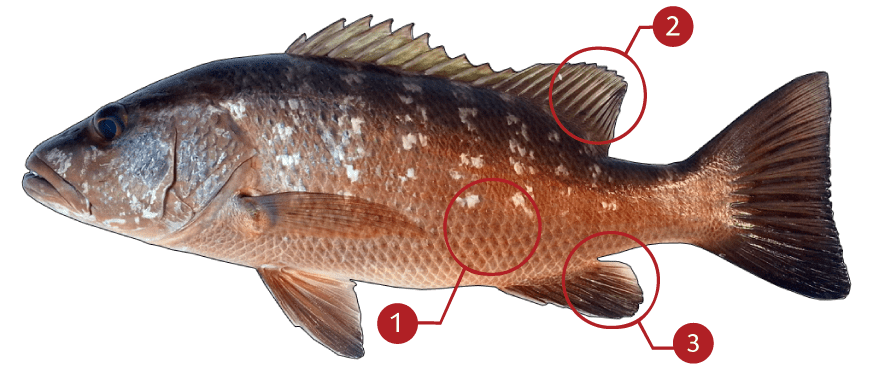CUBERA SNAPPER
How to identify a Cubera Snapper
The dorsal fins of the cubera snapper are connected and consist of 10 spines, followed by 14 rays. The anal fin is roundish and consists of eight rays. There are 5-7 gill rakers (not including rudiments) on the lower limb of the first branchial arch. The pectoral fins do not quite reach to the origin of the anal fin. The eyes are dark red and the body ranges from gray to greenish, often tinged with red. Its closest look-alike may be the gray, or mangrove snapper. Like most snappers the gray snapper has more gill rakers on the average (7-9 on the lower limb of the first branchial arch) than the cubera does. The mangrove snapper also is much smaller than a cubera snapper. Another close relative, the red snapper, differs not only in color and size, but in having nine anal rays and 8-10 gill rakers on the lower limb of the first branchial arch. Also, the pectoral fin of the red snapper reaches to or beyond the origin of its anal fin, which is angular, not roundish.
Where to catch Cubera Snapper
The cubera snapper is found throughout the western Atlantic from Florida and Cuba southward to Brazil. It is the giant of all the snappers, attaining weights in excess of 100 pounds and an overall length in excess of four feet. The snapper family Lutjanidae consists of some 250 different species in 25 genera. At least fifteen species are found in the waters of North America, and ten of these species belong to the genus Lutjanus.
IDENTIFICATION

| |
The body ranges from gray to greenish, often tinged with red |
| |
The dorsal fins are connected and consist of 10 spines, followed by 14 rays |
| |
The anal fin is roundish and consists of eight rays |
TARGET AREAS
|
|
Acknowledgements: We thank TAKEMEFISHING.org (www.takemefishing.org), Wisconsin Department of Natural Resources, Indiana Department of Natural Resources for their contributions to these FISH FACTS.

